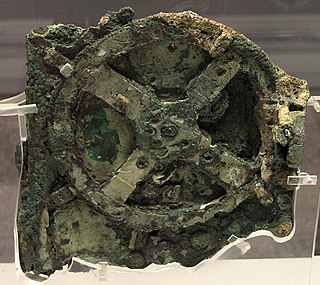 W
WAn out-of-place artifact (OOPArt) is an artifact of historical, archaeological, or paleontological interest found in an unusual context, which challenges conventional historical chronology by its presence in that context. Such artifacts may appear "too advanced" for the technology known to have existed at the time, or may suggest human presence at a time before humans are known to have existed. Other examples may suggest contact between different cultures that is hard to account for with conventional historical understanding.
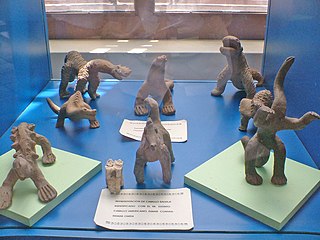 W
WThe Acámbaro figures are about 33,000 small ceramic figurines allegedly found by Waldemar Julsrud in July 1944, in the Mexican city of Acámbaro, Guanajuato. The figurines are said by some to resemble dinosaurs and are sometimes cited as anachronisms. Some young-Earth creationists have adduced the existence of figurines as credible evidence for the coexistence of dinosaurs and humans, in an attempt to cast doubt on scientific dating methods and potentially offer support for a literal interpretation of the Genesis creation narrative.
 W
WAncient Discoveries is a television series that premiered on December 21, 2003, on The History Channel. The program focused on ancient technologies. The show's theme was that many inventions which are thought to be modern have ancient roots or in some cases may have been lost and then reinvented. The program was a follow-up to a special originally broadcast in 2005 which focused on technologies from the Ancient Roman era such as the Antikythera mechanism and inventors such as Heron of Alexandria. Episodes of the regular series expanded to cover other areas such as Egypt, China and East Asia, and the Islamic world.
 W
WThe Antikythera mechanism is an ancient Greek hand-powered orrery, described as the first analogue computer, the oldest known example of such a device used to predict astronomical positions and eclipses for calendar and astrological purposes decades in advance. It could also be used to track the four-year cycle of athletic games which was similar to an Olympiad, the cycle of the ancient Olympic Games.
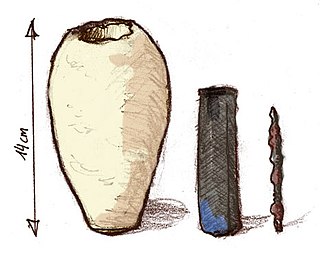 W
WThe Baghdad Battery or Parthian Battery is a set of three artifacts which were found together: a ceramic pot, a tube of copper, and a rod of iron. It was discovered in modern Khujut Rabu, Iraq, close to the metropolis of Ctesiphon, the capital of the Parthian and Sasanian empires of Persia, and it is believed to date from either of these periods.
 W
WThe Bat Creek inscription is an inscribed stone collected as part of a Native American burial mound excavation in Loudon County, Tennessee, in 1889 by the Smithsonian Bureau of Ethnology's Mound Survey, directed by entomologist Cyrus Thomas. The inscriptions were initially described as Cherokee, but in 2004, similarities to an inscription that was circulating in a Freemason book were discovered. Hoax expert Kenneth Feder says the peer reviewed work of Mary L. Kwas and Robert Mainfort has "demolished" any claims of the stone's authenticity. Mainfort and Kwas themselves state "The Bat Creek stone is a fraud."
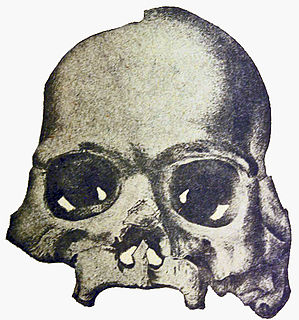 W
WThe Calaveras Skull was a human skull found by miners in Calaveras County, California, which was purported to prove that humans, mastodons, and mammoths had coexisted in California. It was later revealed to be a hoax. Coincidentally, "calaveras" is the Spanish word for "skulls".
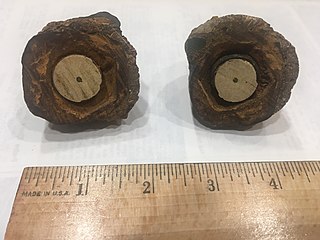 W
WThe Coso artifact is an object claimed by its discoverers to be a spark plug found encased in a lump of hard clay or rock on February 13, 1961, by Wallace Lane, Virginia Maxey and Mike Mikesell while they were prospecting for geodes near the town of Olancha, California, and long claimed as an example of an out-of-place artifact. The artifact has been identified as a 1920s-era Champion spark plug.
 W
WCrystal skulls are human skull hardstone carvings made of clear or milky white quartz, claimed to be pre-Columbian Mesoamerican artifacts by their alleged finders; however, these claims have been refuted for all of the specimens made available for scientific studies. The results of these studies demonstrated that those examined were manufactured in the mid-19th century or later, almost certainly in Europe, during a time when interest in ancient culture was abundant. The skulls appear to have been crafted in Germany, quite likely at workshops in the town of Idar-Oberstein, which was renowned for crafting objects made from imported Brazilian quartz in the late 19th century.
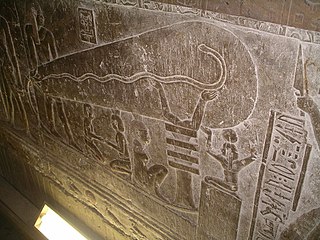 W
WThe Dendera light is a motif carved as a set of stone reliefs in the Hathor temple at Dendera in Egypt, which superficially resemble modern electric lighting devices. A fringe hypothesis suggests that the Dendera light depicts advanced electrical technology possessed by the ancient Egyptians; mainstream Egyptologists however view the carvings as representing a typical set of symbolic images from Egyptian mythology. These depict a djed pillar and a lotus flower spawning a snake inside it, symbols of stability and fertility, respectively.
 W
WThe Dorchester Pot was a metal vase-like object that was recovered in two pieces after an explosion used to break up rock at Meeting House Hill, in Dorchester, Massachusetts in 1852. According to text reprinted from the Boston Transcript, a local paper, in the June 5, 1852 Scientific American, the two pieces were found, loose among debris thrown out by the explosion. Apparently, it was inferred from the locations of the two pieces of this pot among the explosion debris that this pot had been blasted from solid puddingstone (conglomerate), which is part of the Roxbury Conglomerate, from about 10 feet below the surface of Meeting House Hill. The story has been used by creationists and fringe theorists as evidence that conventional models of geology or the length of the human presence on earth are wrong. Mainstream commentators identify it as a Victorian era candlestick or pipe holder.
 W
WDer Eiserne Mann is an old iron pillar partially buried in the ground in the German national forest of Kottenforst-Ville Nature Park, about two kilometers north-east of the village Dünstekoven. It is a roughly rectangular metal bar with about 1.2 m above ground and approximately 1.0 m below ground. The pillar is currently located at a meeting of trails which were built in the early 18th century through the formerly pathless forest area, but it is believed to have stood in another nearby location before that time.
 W
WThe Eltanin Antenna is an object photographed on the sea floor by the Antarctic oceanographic research ship USNS Eltanin in 1964, while photographing the sea bottom west of Cape Horn.
 W
WThe Esperanza Stone was a large inscribed stone found in the valley of the Yaqui, Mexico. It was discovered and excavated in 1909 by Major F. R. Burnham and Charles Frederick Holder.
 W
WA geofact is a natural stone formation that is difficult to distinguish from a man-made artifact. Geofacts could be fluvially reworked and be misinterpreted as an artifact, especially when compared to paleolithic artifacts.
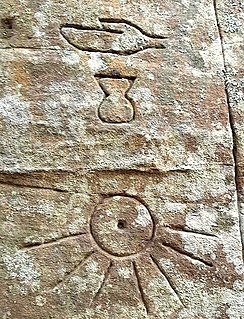 W
WThe Gosford Glyphs are a group of approximately 300 pseudo-Egyptian hieroglyphs located in Kariong, New South Wales, Australia. They are found in an area known for its Aboriginal petroglyphs, just between Gosford and Woy Woy, within the Brisbane Water National Park. The glyphs have been since dismissed as a hoax by authorities and academics after their discovery in the 1970s, but there are still attempts to prove the belief that they were carved by the ancient Egyptians about 4,500 years ago.
 W
WA number of runestones have been found in Oklahoma. All of them are likely of modern origin, with some of them possibly dating to the 19th century "Viking revival" or being produced by 19th-century Scandinavian settlers.
 W
WHelicopter hieroglyphs refer to an Egyptian hieroglyph carving from the Temple of Seti I at Abydos.
 W
WThe Ica stones are a collection of andesite stones found in Ica Province, Peru that bear a variety of diagrams. Some of them supposedly have depictions of dinosaurs, and what is alleged to be advanced technology. These are recognised as modern curiosities or hoaxes.
 W
WThe Kensington Runestone is a 202-pound (92 kg) slab of greywacke stone covered in runes reportedly discovered in central Minnesota in 1898. Olof Öhman, a Swedish immigrant, reported that he unearthed it from a field in the largely rural township of Solem in Douglas County. It was later named after the nearest settlement, Kensington.
 W
WThe Kingoodie artefact is an object with the characteristics of a corroded iron nail found in a block of Devonian sandstone in 1844 in the Kingoodie Quarry in Kingoodie, Scotland.
 W
WThe Lake Winnipesaukee mystery stone is an alleged out-of-place artifact (OOPArt) found in a town near Lake Winnipesaukee in New Hampshire. The stone's age, purpose and origin are unknown.
 W
WThe London Hammer is a name given to a hammer made of iron and wood that was found in London, Texas in 1936. Part of the hammer is embedded in a limey rock concretion, leading to it being regarded by some as an anomalous artifact, asking how a man-made tool could come to be encased in a 400 million year old rock.
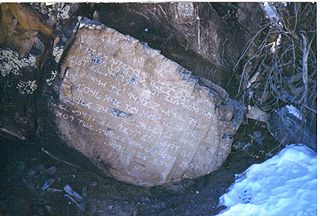 W
WThe Los Lunas Decalogue Stone is a large boulder on the side of Hidden Mountain, near Los Lunas, New Mexico, about 35 miles (56 km) south of Albuquerque, that bears a very regular inscription carved into a flat panel. The stone is also known as the Los Lunas Mystery Stone or Commandment Rock. The stone is controversial in that some claim the inscription is Pre-Columbian, and therefore proof of early Semitic contact with the Americas.
 W
WMisrah Ghar il-Kbir is a prehistoric site in Siġġiewi, in the south of the Island of Malta, near the Dingli Cliffs. It is best known for its "cart ruts", a complex network of tracks carved in the rock. The age and purpose of the tracks is uncertain. In general, most archaeologists presume that the site developed about 2000 BC after new settlers came over from Sicily, starting the Bronze Age in Malta.
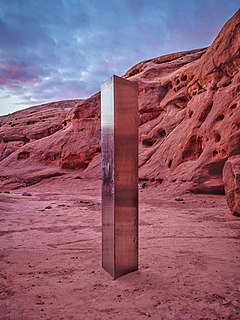 W
WIn late 2020, the appearance of a series of metal columns was reported internationally. Often referred to as "monoliths", these sheet metal structures began to be constructed in the wake of the discovery of the Utah monolith, a similar metal pillar that was placed in a remote canyon in Utah, in the United States.
 W
WA number of runestones have been found in Oklahoma. All of them are likely of modern origin, with some of them possibly dating to the 19th century "Viking revival" or being produced by 19th-century Scandinavian settlers.
 W
WOlmec alternative origin speculations are non-mainstream theories that have been suggested for the formation of Olmec civilization which contradict generally accepted scholarly consensus. These origin theories typically involve contact with Old World societies. Although these speculations have become somewhat well-known within popular culture, particularly the idea of an African connection to the Olmec, they are not regarded as credible by mainstream researchers of Mesoamerica and are considered fringe theories.
 W
WThe Pangboche Hand is an artifact from a Buddhist monastery in Pangboche, Nepal. Supporters contend that the hand is from a Yeti, a scientifically unrecognized animal purported to live in the Himalayan mountains. A finger bone from the hand was tested and the DNA shown to be human.
 W
WA number of runestones have been found in Oklahoma. All of them are likely of modern origin, with some of them possibly dating to the 19th century "Viking revival" or being produced by 19th-century Scandinavian settlers.
 W
WThe Quimbaya artifacts are several dozen golden objects, found in Colombia, made by the Quimbaya civilization culture, dated around 1000 CE, a few of which are supposed to represent modern airplanes, and therefore to be out-of-place artifacts. The whole of the figurines, measuring 2 to 3 inches each, are described in mainstream archaeology as depicting birds, lizards, amphibians and insects common in that region and period, some of them highly stylized, as in the Gold Museum, Bogotá.
 W
WThe San Pedro Mountains mummy(known informally as Pedro) is a mummy discovered in Wyoming. Due to its unusual physical features and small stature, it has become a part of American folklore as well as UFOlogy and cryptozoology. Mainstream scientific opinion considers "Pedro" to be the mummy of a malformed infant that was born with anencephaly.
 W
WThe Saqqara Bird is a bird-shaped artifact made of sycamore wood, discovered during the 1898 excavation of the Pa-di-Imen tomb in Saqqara, Egypt. It has been dated to approximately 200 BCE, and is now housed in the Egyptian Museum in Cairo. The Saqqara Bird has a wingspan of 180 mm (7.1 in) and weighs 39.12 g (1.380 oz). Its purpose is not understood because of a lack of period documentation.
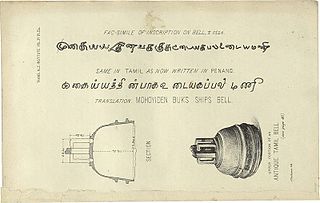 W
WThe Tamil Bell is a broken bronze bell discovered in approximately 1836 by missionary William Colenso. It was being used as a pot to boil potatoes by Māori women near Whangarei in the Northland Region of New Zealand.
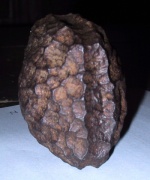 W
WThe Wolfsegg Iron, also known as the Salzburg Cube, is a small cuboid mass of iron that was found buried in Tertiary lignite in Wolfsegg am Hausruck, Austria, in 1885. It weighs 785 grams and measures 67 mm × 67 mm × 47 mm. Four of its sides are roughly flat, while the two remaining sides are convex. A fairly deep groove is incised all the way around the object, about mid-way up its height.